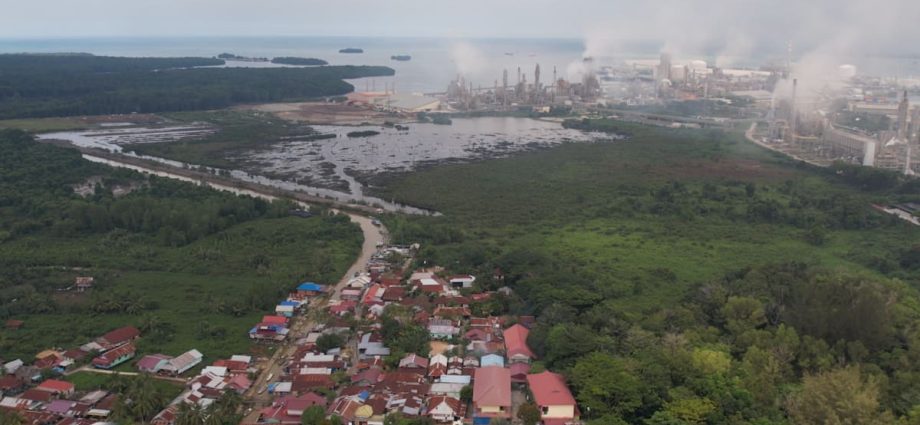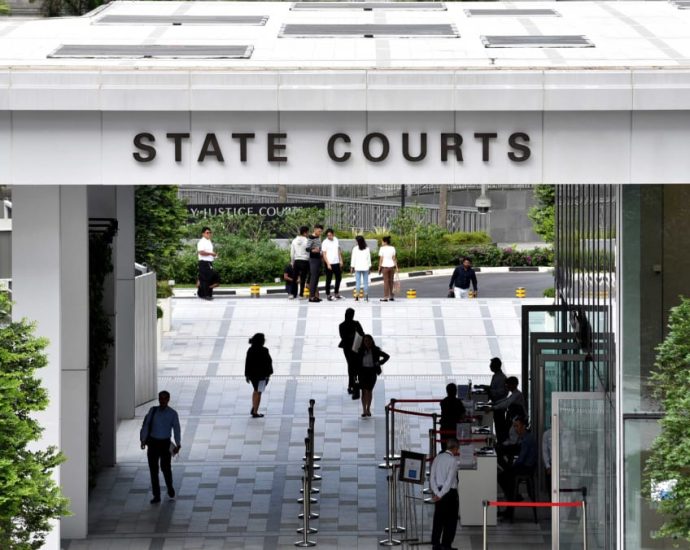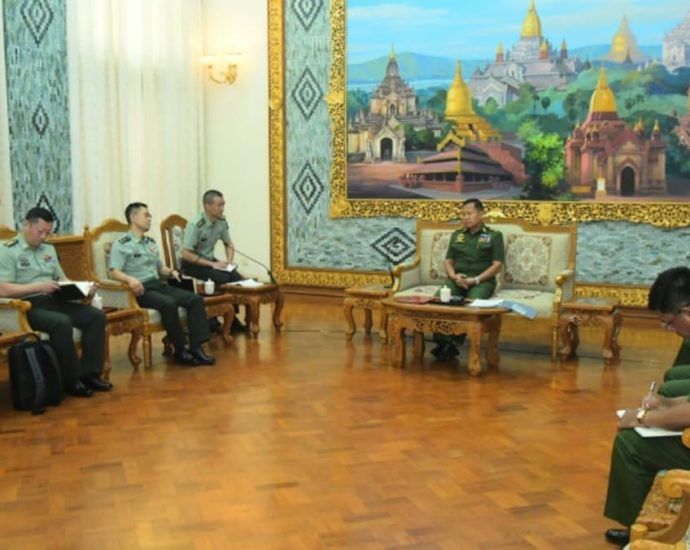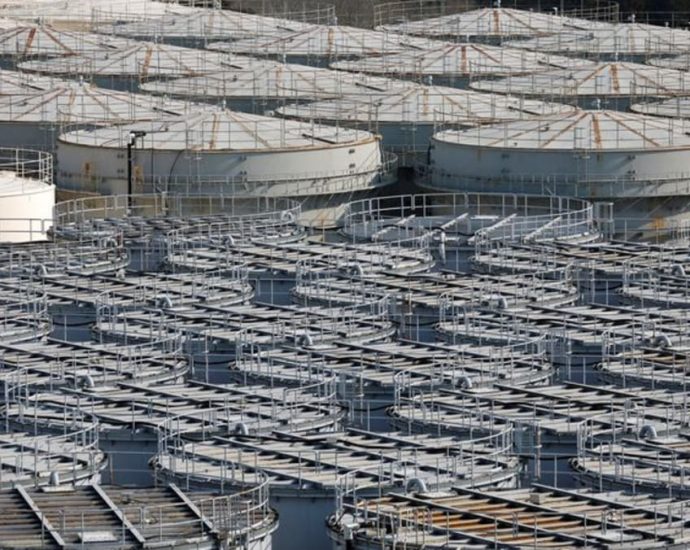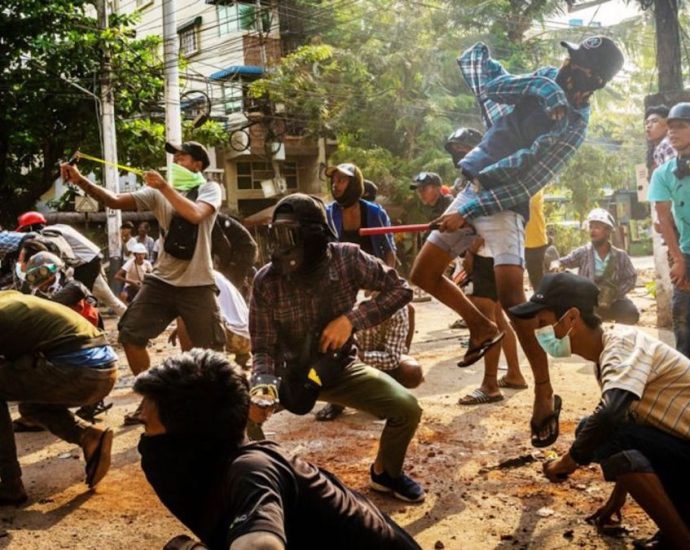Safety at some Indonesian fertiliser manufacturing plants in spotlight amid audits on vital state facilities

“It depends on the wind direction. If the wind blows west, the smell goes to the other side, but if it blows south, the smell comes to Guntung.”
The firm has acknowledged the smell from its facilities but maintained that the emissions are not at dangerous levels and do not pose a health risk to residents.
The company said it abides by high safety standards and has measures in place in the event of a leakage.
It also said it conducts regular emergency drills to keep first responders alert for any possible incidents.
SAFETY MEASURES IN PLACE
Pupuk Kalimantan Timur’s vice president for safety and health David Ronaldo Manik said that the firm involves external parties in its safety protocols, including local representatives and the country’s health and disaster agencies.
“If something happens which has an impact on the community, the communication channels need to be clear. We hope there will not be any miscommunication between what happens in the facility and the information outside,” he said.
Mr David explained that the facility has four types of sirens depending on the nature of the incident. The first alerts residents that there has been a minor incident at the plant, and everyone should remain calm, while the second means the incident is being contained internally and only workers have to be evacuated.
The third siren is a signal that there is a leakage and residents could potentially be exposed to danger and people living nearby must be evacuated. The last type is an indicator that the risk has been contained and residents can return to their homes.
Residents in Guntung also take part in these emergency drills and are taught about the different types of sirens activated.
“If the siren is sounded three times, it means there is danger, and we should evacuate to a shelter which has been provided. If the siren is raised, we should be alert and wait for news from Pupuk Kalimantan Timur so we are informed, Guntung resident Hermanto Tutupoho said.
Blackpink ticket scalper held for fraud
Police say woman resold e-tickets for K-pop superstars more than once, leaving ‘Blinks’ empty-handed

Police have arrested a young woman on charges of swindling fans of the K-pop group Blackpink out of at least 700,000 baht by selling e-tickets that had already been sold.
Nattharika “Disco” Yangsuai was arrested at an apartment in the Jorakhae Bua area of Lat Phrao district, Pol Maj Gen Theeradet Thammasuthee, commander of the Metropolitan Police Bureau (MPB) Investigation Division, said on Wednesday.
Ms Nattharika, 26, was wanted on an arrest warrant issued by the Saraburi Provincial Court on April 27 for online fraud. She was named in nine complaints with damages of at least 700,000 baht.
The complaints had been brought to the attention of Police Cyber Taskforce (PCT) officers, who worked with MPB investigators to track down the scammer in the capital.
During questioning, police say, the suspect confessed to the fraud. She told officers that she earned money as a ticket scalper, reselling concert tickets, including those for Blackpink, a famous South Korean girl group and one of the world’s biggest acts.
The K-Pop band featuring Thai superstar Lalisa “Lisa” Manoban brought their Born Pink World Tour to the Suphachalasai National Stadium in Bangkok on Jan 7 and 8. Tickets were priced from 2,000 to 9,600 baht. In response to overwhelming demand, they delivered two “encore” performances this past weekend before 100,000 fans at Rajamangala National Stadium.
Ms Nattharika told investigators she had asked her sisters and friends to buy tickets for the January Blackpink shows online and then resold the e-tickets to fans. The group bought 200 tickets at 9,600 baht each and resold them for between 15,000 and 30,000 baht. All 200 tickets sold out, reaping a handsome profit.
But demand was so high that she continued to get inquiries after the original 200 tickets were gone. She decided to offer the same e-tickets again, even though they had already been resold.
When the fans turned up for the concert, a problem emerged as each ticket had more than one owner. Many disappointed “Blinks”, as the group’s fans are known, were turned away. Subsequently, complaints were filed against the ticket seller.
The suspect was held in police custody for further legal action.
WWII grave robbers on the loose in SE Asian waters
JAKARTA – The recent death of the sole survivor of the World War II sinking of the Australian light cruiser HMAS Perth in Indonesia’s Sunda Strait has brought home renewed attention to hundreds of wartime shipwrecks and the remains of their crewmen lying at the bottom of Southeast Asian seas.
After years of effort, it was only in 2018 that the Australian and Indonesian governments reached agreement on declaring the area around the 7,100-ton Perth and the nearby wreck of the American cruiser USS Houston as a maritime memorial park.
It was nearly too late. Australian Maritime Museum archeologists found that, between 2015 and 2016, about 60% of the Perth’s starboard hull plating was removed in an industrial-scale operation that disturbed the graves of the 357 Australian sailors in the process.
Salvage vessels have reportedly looted as many as 40 other wrecks, the last resting place for thousands of American, British, Australian, Dutch and Japanese sailors in the Java and South China seas and around the fringes of the Pacific and Indian oceans.
Only last month, the Chinese grab dredger Chuan Hoon 68 was reported picking over the wrecks of the British battleship HMS Prince of Wales and the battlecruiser HMS Repulse, sunk by Japanese bombers off Malaysia’s east coast in December 1941 days after the attack on Pearl Harbor.
Royal Navy Museum director-general Dominic Tweddle said in a May 24 statement that the illegal salvage operation has thrown into sharp relief how vulnerable 5,000 similar historic underwater naval sites around the world are to wholesale plundering.
“We are distressed and concerned at the apparent vandalism for personal profit (of the two vessels),” he complained. “They are designated war graves. We are upset at the loss of naval heritage and the impact on the understanding of our Royal Navy history.”
Tweddle said there is a need for a management strategy for the Royal Navy’s underwater heritage to better protect or commemorate the wrecks “including the targeted retrieval of objects.”
“A strategy is vital to determine how to assess and manage these wrecks in the most efficient and effective manner,” he said. “Above all, we must remember the crews who served on these lost ships, and all too often gave their lives in the service of their country.”

Retired Royal Navy Captain Roger Turner, who led the recent successful search for the Japanese ship Montevideo Maru which carried 1,000 Australian prisoners of war to their deaths in 1942, told the Asia Times: “It is quite despicable that the Chinese should be pillaging war graves.”
Reflecting on the value of the scrap, the former nuclear submarine engineer points out that in one application the 200mm thick steel contains a very low level of absorbed radiation suitable for ultra-sensitive nuclear-monitoring devices.
“Post-nuclear-age steel, since about 1940, carries its own radiation signal derived from above-ground nuclear weapons testing, which leads to global fallout being imparted into the steel during the smelting process,” he explains.
As a result, steel from the Repulse and the Prince of Wales, launched in 1916 and 1939 respectively, is more valuable than normal scrap, particularly the 400mm-thick, high-quality armor plating covering parts of the 43,700-ton battleship.
Turner notes that although the anthropogenic element of background radiation has now fallen back to what it was before the 1963 nuclear weapons test ban treaty, diminishing the value of pre-nuclear age scrap, it still carries a premium.
“In comparatively shallow water of about 68 meters, even without the nuclear premium, 40,000 tons of steel at $100 per ton is a fair return,” he says. “Probably getting just half of it would be profitable.”
Malaysian authorities say they are investigating the movements of the 8,300-ton Chuan Hong 68, which has been in Malaysian waters since February and is known for earlier salvaging operations in the Java Sea.
The vessel is suspected of also pillaging the wrecks of the Dutch light cruisers HNLMS de Ruyter and HNLMS Java and the destroyer HNLMS Kortenaer, sunk in the Battle of the Java Sea in early 1942, shortly before the Perth and Houston met the same fate.
In 2017, responding to protests from the Netherlands government, Indonesia declared the area around the three hulks a historic site, using rarely applied 2010 legislation to forbid any anchoring, fishing or diving.
It was too late, however, to prevent the almost total removal of the wrecks of the British heavy cruiser HMS Exeter, and the destroyers HMS Encounter and HMS Electra, which were sunk in the same encounter with the loss of 2,300 lives.
Little is known about the wrecks of other allied warships, including the corvette HMAS Armidale and the destroyer HMAS Voyager, both sunk off the south coast of Timor Leste, the carrier USS Langley (Cilacap) and the destroyers USS Edsall (eastern Indian Ocean), HMS Jupiter (Java Sea) and the HNLMS Van Nes (Bangka).
Among the other hulks are three US submarines and two German U-boats, which had been operating out of Japanese bases in occupied Dutch East Indies and British Malaya and were sunk in the Java Sea in November 1944 and April 1945.
Known Japanese wrecks include the heavy cruiser Ashigura, torpedoed off the Bangka-Belitung islands in June 1945, a light cruiser, eight destroyers and three submarines, one of which lies close to the Krakatoa volcano in the Sunda Strait.
British naval historian Geoffrey Till believes the ultimate solution is for the United Nations Educational, Scientific and Cultural Organization (UNESCO) to draft a common protection policy that can be implemented by individual countries.
“But since countries don’t protect such sites of historic importance, and in many cases don’t have the resources to do so even if they cared, it’s hard not to be despairingly pessimistic about this,” he said.
It is not clear how many commercial salvagers may be involved in the grave robbing, but naval experts place part of the blame on complacent Western governments allowing China’s progressive encroachment on international norms and conventions.
The plundering of the Repulse and the Prince of Wales in 50-meter-deep water off Kuantan isn’t new. In 2013, divers noticed one of the Repulse’s bus-sized brass propellors was missing, something that could only have been done using a heavyweight crane.
Reports a year later claimed explosives were being used to break up both wrecks, the grave of 840 sailors. But the Malaysian government has done little to stop the destruction despite the site being well within the country’s economic exclusion zone (EEZ).
Britain’s Protection of Military Remains Act makes it an offense to interfere with a protected place or to disturb or remove anything from the site. Divers are permitted to visit, but the rule is don’t touch and don’t penetrate.
There is no international law forbidding the practice, however, and outside of the United Kingdom, the sanctions can only be enforced in practice against British citizens, British-flagged ships or vessels landing in Britain.

Sunk by enemy gunfire and torpedoes on March 1, 1942, the Perth and the 9,000-ton Houston were victims of the Japanese invasion force which had completed the conquest of Southeast Asia and was then in the process of occupying the Dutch East Indies.
Able Seaman Frank McGovern, who died last week at 103, was the Perth’s last survivor. But that was only the start of his wartime ordeal, which Australian Prime Minister Anthony Albanese described as “amazing” and McGovern as “an extraordinary Australian.”
In the years following the sinking of the Perth, he endured two years on the notorious Burma Railway, then was aboard a Japanese ship torpedoed by a US submarine in the Philippine Sea while carrying 1,000 prisoners of war to slave factories in Japan.
More than 540 Australians perished, but McGovern and 30 other prisoners escaped and spent three days in a lifeboat before being picked up by another Japanese ship, which delivered them to Japan.
There, McGovern was put to work in a factory, where his spine was fractured during the second of two American air raids in which incendiary bombs devastated large swathes of Tokyo.
Forced to work or face summary execution, the fate that awaited the incapacitated after they were drained of their blood, he managed to survive until the Japanese surrendered on September 2, 1945.
McGovern was one of the first Australians repatriated home, but it took years for him to adjust, confronted with many sad memories – including the death of his elder brother aboard the ill-fated Perth.
The general location of the Perth and the Houston, which lost 700 crewmen in the sinking and during subsequent Japanese internment, has long been known, lying four kilometers apart close to the mouth of the strait separating Java and Sumatra.
Retired Australian navy diver Clive Carlin and compatriot Jack Hammett spent many weekends searching for the two wrecks in 35-meter-deep water, but say they only discovered their exact location from a local fisherman using his own GPS in 1999.
“For me, the Perth is as memorial to the men who sailed in her, in defense of Australia and the Australian way of life,” says Carlin, a long-time Indonesia resident who helped lay an ensign on the wreck during an underwater ceremony on the 60th anniversary of the one-sided battle.

For the Australians, the issue of protecting the wrecks has surfaced again since the discovery of the Montevideo Maru, a converted passenger/cargo ship sunk by the US submarine Sturgeon off the northwest Philippines in July 1942.
Nearly 1,000 Japan-bound Australian PoWs who had been captured in fighting around lightly defended Rabaul on the northern tip of New Britain in Papua New Guinea died in what is still Australia’s worst maritime disaster.
The wreck lies about 100 kilometers west of Luzon’s Cape Bodjeodor on a direct line to its plotted destination on China’s Hainan island. But at a depth of 4,000 meters – the same as the ill-fated Titanic in the North Atlantic – that is unlikely to attract the attention of pillagers.
Manis Leting and Triphie top the 1337 Ventures’ Alpha Startups Pre-Accelerator
Both startups will receive pre-seed funding of up to US$10,813
The two were chosen from the 26 Malaysian startups that joined the cohort
Nine aspiring Malaysian startups showcased their innovative solutions in front of a live audience of investors, industry experts, and fellow entrepreneurs during 1337 Ventures’ much-awaited Alpha Startup Pre-Accelerator programme. The pre-accelerator…Continue Reading
Right-hand man of mastermind in S$39.9m SkillsFuture fraud gets over 13 years’ jail
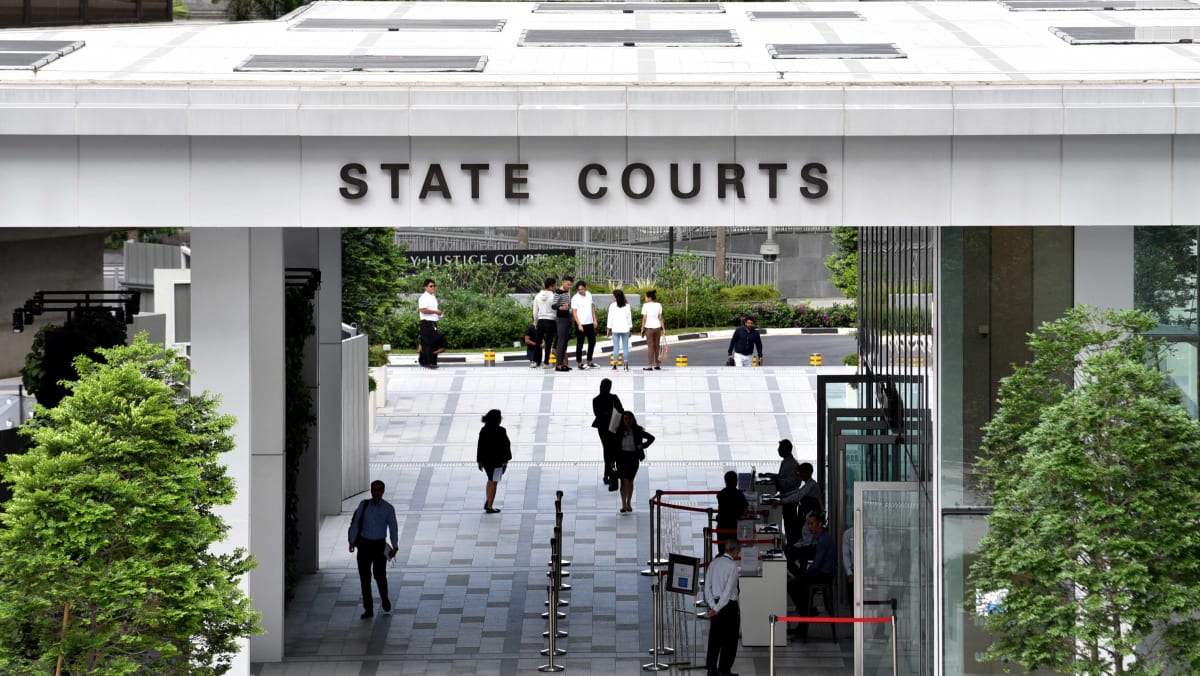
SINGAPORE: The right-hand man of a mastermind who engineered the largest fraud involving Government funds to date was sentenced to jail for 13 years and nine months on Wednesday (May 31).
Lim Wee Hong David, 44, was part of the syndicate that submitted more than 8,300 fraudulent claims to SkillsFuture Singapore for training course subsidies when no training was conducted.
SkillsFuture was duped into disbursing almost S$40 million (US$29.6m), of which S$21.3 million was laundered away and remains unaccounted for.
Lim pleaded guilty to 15 charges, which include conspiring to convert or transfer criminal proceeds, conspiring to conceal criminal proceeds and forgery of a valuable security. Another 33 charges were considered in sentencing.
The syndicate exploited the SkillsFuture Singapore Course Fee Grant scheme, where business entities in Singapore can apply to SkillsFuture for a subsidy if they send their employees to attend skills training courses with registered training providers.
The masterminds behind the fraud, husband-and-wife pair Ng Cheng Kwee and Lee Lai Leng, registered nine entities as applicant entities or training providers from January 2017.
Lim was roped in as he was Ng’s friend since 2011. He also introduced another co-accused to the couple, who later helped in the criminal scheme.
The group agreed on a scheme to submit false course fee grant claims to cheat SkillsFuture into disbursing training grants.
The mastermind couple used different computers to submit such false claims online, using their relatives’ details and Singpass login credentials.
Between April and October 2017, the nine entities submitted 8,381 course fee grant applications and a corresponding 8,391 claims, lying that three training providers had provided courses to 25,141 employees of the six applicant entities.
Most of the applications and claims were approved automatically, with S$39.9 million disbursed to eight of the nine entities.
After the money was disbursed to the corporate bank accounts of the eight entities, more than S$27.8 million was withdrawn in cash by members of the syndicate.
Lim was involved in the scheme from the start, helping to submit false claims, recruiting a friend to submit false claims and encashing cheques.
He also acted on Ng’s instructions by collecting S$2.6 million in two bags and passing the money to two unknown people.
SkillsFuture noticed that the nine entities used by the syndicate had made abnormally high numbers of course fee grant claim submissions.
It lodged a police report in November 2017.
The prosecution sought at least 168 months to 178 months’ jail for Lim, calling this an unprecedented case of fraud on a public institution.
The public funds allocated to SkillsFuture were meant to help Singapore businesses train and upskill their employees and build a more resilient workforce, said the prosecution.
Instead, Lim and his co-accused pilfered the public funds, causing immense financial losses and reputational harm to SkillsFuture.
Lim’s jail term was backdated to November 2017. He has been on remand for more than five years.
The other members have been sentenced to varying jail terms, with Ng receiving 17 years and nine months’ jail in 2021. His wife was given 14 years’ jail.
SkillsFuture previously said it had acquired new capabilities such as fraud analytics since the incident. It has also put in place new processes to prevent, detect and respond to fraud and abuse.
Top Chinese intelligence official visits Myanmar for ‘cooperation’ talks
The junta has been shunned by many in the international community over its bloody crackdown on dissent, but China has maintained ties with the regime. Myanmar’s military has imported US$267 million in arms and equipment from China since it seized power, including from state-owned entities, the United Nations’ special rapporteurContinue Reading
South Korea experts say more study needed on Japan’s nuclear water plan
SEOUL: South Korean nuclear safety experts who visited Japan’s wrecked Fukushima nuclear power plant said on Wednesday (May 31) that detailed analysis was needed to verify Japan’s plan to release tonnes of contaminated water from it into the sea. The Fukushima Daiichi nuclear station, about 220km northeast of Tokyo, wasContinue Reading
Myanmarâs resistance: What are we actually fighting for?

It has been more than two years since Myanmar’s army staged a coup. The country has since descended into a dangerous spiral of violence, dire economic hardship and a deepening humanitarian crisis.
As of May, more than 3,500 people have been killed and more than 22,000 arrested, and around 1.8 million remained displaced across the country. A staggering 17.6 million people in total are predicted to be in humanitarian need within this calendar year.
The costs have been immeasurable – in terms of lives lost, livelihoods and infrastructures destroyed, and psychological trauma inflicted. Despite that, the people of Myanmar continue to resist and actively fight against attempted full-blown military rule, once again.
They do this through making difficult decisions in their daily lives. For instance, whether or not they should join (or remain a part of) the Civil Disobedience Movement. Whether or not they should send their children to junta-run schools. Or whether or not they should attempt to flee their homeland only to be face exploitation elsewhere.
Every day, individuals, families and communities across the country have been painstakingly making their way through this post-coup nightmare. In the meantime, the resistance movement as a whole – the “Spring Revolution” – has undergone a transformation in its own right.
Originally framed as a non-violent movement, the revolution has become increasingly heavily militarized. Not only is the use of violence – by all sides – now completely normalized. It is also routinely encouraged and even celebrated.
It is therefore urgently necessary for all of us to reflect on this trajectory of the resistance movement and pose two fundamental questions about its very purpose. Who and what are we fighting against? And who and what are we fighting for?
Simply being ‘anti-coup’ is not enough
Myanmar’s Spring Revolution is often described as an anti-coup movement, referring to the disastrous military takeover on February 1, 2021. If we took this designation literally, it would suggest that this is a movement against the current military junta – the so-called State Administration Council – its leader, Senior General Min Aung Hlaing, and most probably also the institution of Myanmar’s army as a whole.
Consequently, it could also mean that “reversing” the coup would potentially be enough to satisfy the demands of such a movement. As if simply rewinding time to the pre-existing status quo in the country.
This is highly problematic. As we have already argued in a previous piece on Asia Times, going back to the pre-coup times in Myanmar would mean continuing to recognize the military-drafted 2008 constitution, under which the contested 2020 general elections had been held. However, the public has since widely rejected this constitution and the Committee Representing Pyidaungsu Hluttaw has formally abolished it.
In addition, the political path Myanmar was on before the coup had serious shortcomings. The decision-making power continued to be centralized. Women, ethnic and religious minorities were still systematically marginalized. Freedom of speech was receding. Political leaders and the general public struggled to accept that genocide had most probably taken place in their beloved homeland.
Many of these views have drastically shifted since the coup. It would be a shame to “undo” this change, since it represents the coup’s only silver lining.
Finally, having a clear common enemy has definitely brought Myanmar’s diverse political actors together more than ever before. However, this is not sufficient for the Spring Revolution to succeed. Long-term alliances need to be built on shared values and a common vision for the country, rather than simple opposition to those who stand in the way of Myanmar becoming more peaceful, democratic and just.
Need to practice democratic values
Alternatively, Myanmar’s Spring Revolution is frequently referred to as a pro-democracy movement. But what does that really mean? Most of us would agree that being for democracy requires adherence to democratic values, such as accountability, transparency and pluralism, as well as respect for human rights.
Applying this definition on to the resistance movement, we see a lot of space for improvement. One simply cannot be calling for democracy and, at the same time, be actively suppressing or avoiding a critical examination of one’s own decisions and procedures, or even accusing those with critical views to be siding with the enemy.
One cannot be talking about democratic values as long as one is not ready to accept – or at least engage with – diverse opinions and perspectives. Importantly, one cannot be fighting for democracy while inciting violence, torturing prisoners of war or targeting unarmed civilians.
Of course, having to face an institution with absolutely no limits as to what kind of damage it inflicts on its own country and the people in it is indeed challenging. What is the right course of action vis-à-vis armed forces that have never adhered – and surely never will adhere – to the country’s laws, let alone international humanitarian law or any democratic principles whatsoever?
Still, in the middle of this moral dilemma, it is crucial to remember that the Myanmar army’s vicious practices are exactly why the revolution exists – and has existed for many decades – in the first place, and why we in the movement need to reject these practices ourselves. We must not turn evil in the process of fighting evil.
Instead, any and all political actors that like to consider themselves a part of Myanmar’s pro-democracy movement should be ready to be held to democratic standards and take full responsibility in case they fail to do so. A dignified revolution is not a revolution in which no one makes mistakes. What makes a dignified revolution is handling those who make mistakes with transparency and decisiveness.
Pro-federalism: the necessary step further
Let us imagine that suddenly, from one day to another, Myanmar was on a path toward democracy. In this scenario, it would be crucial to ensure that the newfound political stability lasts long enough – at least a few election cycles – for democracy really to take root in the country. For it not only to take root, but actually to thrive, federalism is absolutely necessary.
Only through federalism would the country’s member states be able to attain their sovereignty and self-determination. Only through federalism would genuine power-sharing and equality finally replace centralized structures dominated by one party and one set of political, cultural and religious beliefs. This way, federalism in Myanmar would offer something for all its diverse communities and areas, not just a selected few.
So how do we go about establishing federalism in Myanmar, especially in these revolutionary times?
Waiting for an agreement on and implementation of federal principles at the top level is one approach. Fortunately, it is not the only one. Instead, we can focus on building local government and strengthening local governance institutions in areas of the country where this is possible and at least relatively safe.
Many of these structures have been in existence for decades. This is despite having faced enormous obstacles and limited resources, receiving no support from the central state. Enabling and empowering local communities to govern themselves is not only the most practical and effective way to help them instill self-autonomy in their areas. It is also how we can build federalism from the ground up.
The ‘resistance continuum’
Naturally, federalism in Myanmar would not be able to succeed without democracy. To be pro-federalism, one must thus, inherently, also be pro-democracy and anti-coup too. However, belonging to either of the latter two “camps” does not guarantee adherence to federal principles at all.
That is why it is crucial for all of us in the movement – but also international stakeholders working with or supporting its various actors – to be clear about where on this “resistance continuum” they stand.
Our standing is that the resistance movement needs to go beyond its anti-coup or even pro-democracy designations, and become unapologetically pro-federal. We believe that our ability to resist the temptation to resort to violence and inhumane tactics in the name of revenge or political expediency is what will set us apart from the evil that we are fighting.
We also believe that our appreciation of diversity and decision-making based on kindness, generosity and empathy is what will ensure a more peaceful and prosperous life for the future generations.
Yet we also understand that Myanmar’s diverse resistance forces might find themselves on different parts of the resistance continuum. That is OK, as long as our overall direction is the same. We simply ask each and every actor involved in the movement to reflect continuously on their values, approaches and actions.
This way, these can then be communicated and discussed more openly and straightforwardly, which will ensure a fruitful dialogue moving forward – toward a better Myanmar of tomorrow.
Editor’s note: While the authors would prefer to use the name “Burma” for various reasons, they have agreed to adhere to Asia Times style and accept the usage of “Myanmar,” the official United Nations designation (and that of the regime itself).
China’s farm ministry seeks to salvage damaged wheat
BEIJING: China’s agriculture ministry is urging local authorities to speed up the harvesting and drying of damaged grain after heavy rain flooded fields of ripe wheat in the country’s most important growing region. Authorities should send emergency teams to drain water from fields, speed up access by harvesters and mobiliseContinue Reading
Chinese couple arrested for alleged B10bn fraud

A Chinese couple living in a 67-million-baht house in Bangkok were arrested on Wednesday for alleged multinational fraud, with damage estimated at 10 billion baht, the Cyber Crime Investigation Bureau said.
Shaoxian Su, 31, and his girlfriend Keyi Ye, 25, were taken into custody at their house in The Palazzo Srinakarin housing estate, in Prawet district, on Wednesday morning on charges of public fraud and money laundering.
Police from the Cyber Crime Investigation Bureau (CCIB) impounded 1.5 million baht in cash, the title deed for their 67-million-baht house, ownership documents for four condominium apartments in Sukhumvit area worth 128 million baht and 14 Bearbrick dolls also found on the premises.
A CCIB spokesman quoted victims as accusing the couple of using fake online profiles to approach them via social media and enticing them into “investing in digital currencies and assets”. Local victims were in Bangkok and Prachuap Khiri Khan. They told police they lost about 35 million baht to the suspects.
There were about 20,000 similar complaints filed in other countries, including the United States and Britain, believed linked to the suspects’ network. Total damage was estimated at 10 billion baht.
The couple did not have jobs. They often travelled abroad and had purchased Thailand Elite Cards, which made it easier for them, the CCIB said.
CCIB police also raided nearby luxury houses and impounded more assets they believed were linked to the suspects and their alleged crimes.

